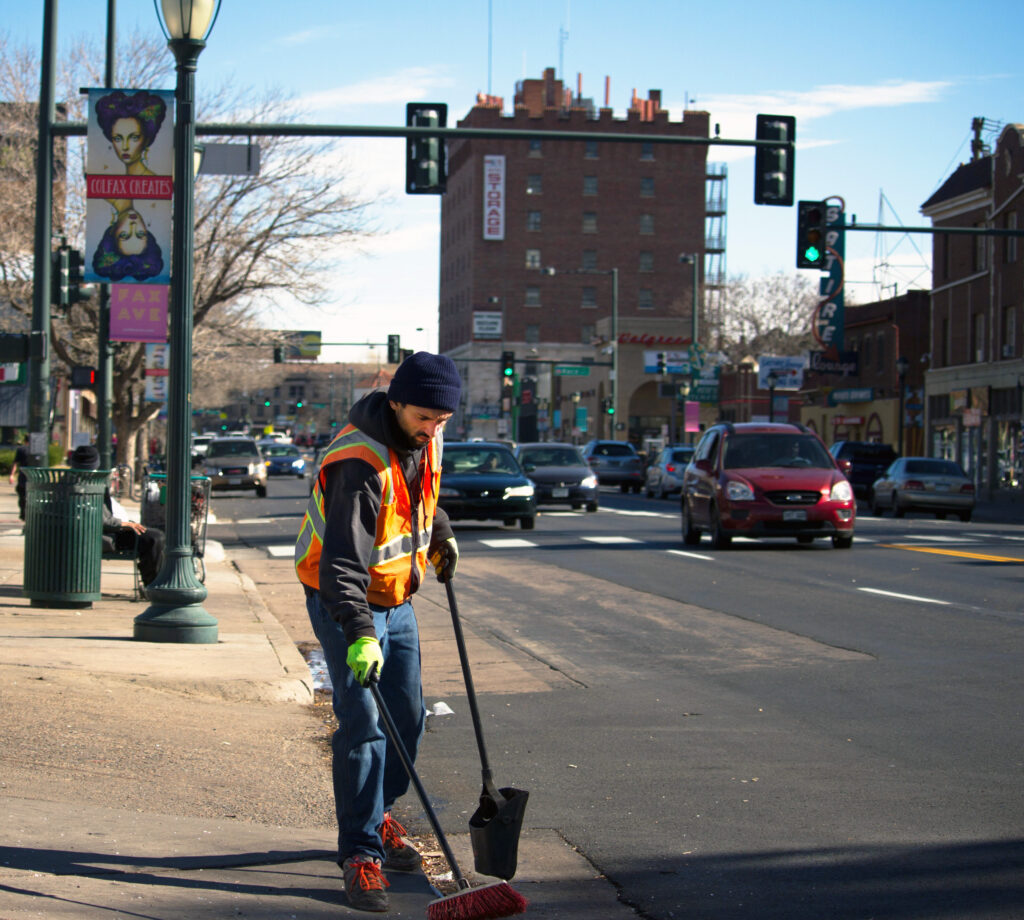
Can I have my federal student loans forgiven or canceled if I work in a public service job?
Yes, some or all of your federal student loans may be canceled if you are eligible for the Public Service Loan Forgiveness Program (PSLF). The Department of Education oversees this program. After you meet all of the requirements, you can apply to have your loans forgiven.
To qualify for PSLF, you must:
- have Direct Loans,
- work full-time in a qualifying public service job,
- be in an qualifying repayment plan,
- make 120 monthly payments (10 years).
Learn More Below:
Use the PSLF Help Tool
Start earning credit toward PSLF now. Use the Department of Education’s PSLF Help Tool to check to see if your employer qualifies, to certify your employment each year, and to apply for forgiveness once you’ve made all 120 payments.

PSLF Requirements
1. Direct Loans
Direct Loans are the only types of loans that qualify for PSLF. If you have federal student loans that are not Direct Loans, you may be able to consolidate those loans into a new Direct Consolidation Loan in order to start earning credit toward PSLF. However, in some cases consolidation may reduce how much time will count towards PSLF cancellation on the new consolidation loan. See our page on consolidation for more information.
Note: Until April 30, 2024, if borrowers consolidate their loans into a Direct Loan, the Direct Consolidation Loan will be credited with the longest period of repayment that accrued on the loans prior to consolidation. See more information here. That means that borrowers can receive full PSLF credit for pre-consolidation time where they were working for qualifying employment and were in repayment.
2. Qualifying Employment
To qualify for PSLF, it doesn’t necessarily matter what your job is, so long as you work full-time (at least 30 hours per week) with a public service organization. The following types of organizations qualify for PSLF:
- Government organizations (including U.S. federal, state, local, tribal governments, and military),
- 501c3 not-for-profit organizations,
- Some not-for-profit organizations with tax statuses other than 501c3
- AmeriCorps and Peace Corps.
Some examples of qualifying jobs include:
- A teacher at a public school,
- A firefighter,
- A military member,
- A social worker for a non-profit,
- A secretary for a government office,
- A sanitation worker for a county department, etc.
Labor unions, partisan political organizations, and for-profit organizations, including for-profit government contractors, are not eligible for PSLF.
3. Qualifying Repayment Plan
Time in a standard repayment plan or in an Income-Driven Repayment (IDR) plan counts towards PSLF forgiveness. If you were repaying under a different plan, that time may count as long as the payment is equal to or greater than the payment under the Standard Repayment amount. Under the new rule, some types of forbearances and deferments may also count towards forgiveness.
All time during the COVID-19 payment pause will count toward PSLF, so long as you meet the other PSLF requirements.
Under the Department’s one-time IDR account adjustment (and the time-limited PSLF waiver that ended on October 31, 2022), previous time in other payment plans may now count toward PSLF (see below for more information on those programs).
4. 10 years of payments
Before you can apply for PSLF, you need to make 120 months (10 years) of qualifying payments on your eligible loans while working in an eligible public service job. Only payments made after October 1, 2007 count toward PSLF. Your 120 payments do not need to be made back-to-back. If you leave your public service job temporarily and then go back to public service work later, you can still get credit for all of your payments made while working in public service. Additionally, under the new PSLF rules, late payments and partial payments may now count toward PSLF.

Apply for PSLF
Make sure you submit your employment certification form (ECF), each year while you are working in public service, and whenever you change public service jobs.
You can use the Department of Education’s PSLF Tool to easily fill out and send your ECF for your employer to sign. You can also mail or upload the signed ECF to your loan servicer. After you submit your first ECF, your loans will be transferred to Mohela, the loan servicer that manages the PSLF Program.
Note: FedLoan Servicing is no longer managing the PSLF Program. Borrowers working toward PSLF who had their loans serviced by FedLoan Servicing are in the process of having their loans transferred to Mohela. Make sure you create an online account with Mohela to stay on track for PSLF.
Once you have made 120 qualifying payments, you can then use the PSLF Help Tool to apply online to have your loans forgiven. It may take a few months for your application to be processed. If it is approved, you can get a refund of any additional payments you made on your loans while you were waiting for approval. If your PSLF application is denied, you can contact your loan servicer, submit a reconsideration request, or file a complaint with the FSA Ombudsman to see if it can be fixed.

One-time Adjustments to Help Borrowers Qualify for PSLF
The Department of Education estimates that nearly 3 million Americans may be eligible to have their loans canceled through the PSLF program. However, because of numerous problems with the PSLF program, only a small percentage of eligible borrowers actually received loan forgiveness under the PSLF program initially. To fix these problems, the Department of Education announced a limited PSLF waiver that allowed borrowers who applied by October 31, 2022 to receive credit toward PSLF for time that did not previously count.
While the limited waiver period has ended, borrowers who did not apply by the October 31st deadline can still receive almost all of the same benefits through the Department of Education’s one-time account adjustment.
The one-time account adjustment makes all past time in repayment qualify for PSLF forgiveness, even if you were not in an IDR plan. The account adjustment also allows you to count certain time in forbearance and deferment toward PSLF. However, time where your loans were in default or were in an in-school deferment or grace period will not count towards PSLF.
Although most borrowers will get this credit automatically, if you have FFEL loans, Perkins loans, HEAL loans, you have to consolidate those loans into a new Direct Consolidation Loan by April 30, 2024 in order to receive full credit under the account adjustment. The new consolidation loan will receive credit for the time in repayment that accrued on the FFEL, Direct, and Perkins loans before the consolidation occurred.
Additionally, Parent PLUS Loan borrowers who work in public service are eligible for the account adjustment and can now get credit for time toward PSLF. This is important because Parent PLUS borrowers were not eligible for the limited PSLF waiver. However, if Parent PLUS borrowers are not yet at PSLF cancellation, they will probably need to take additional steps to reach PSLF cancellation. Parent PLUS loans are not eligible for any of the IDR plans, and the standard repayment plan is designed to pay off loans after 10 years of repayment. As a result, Parent PLUS borrowers will probably need to consolidate their loans into a Direct Consolidation Loan so that they are eligible for an IDR plan and are eligible to cancel their loans via PSLF. Unfortunately, Direct Consolidation Loans that include a Parent PLUS loan are only eligible for the Income Contingent Repayment plan, the least generous IDR plan. See our IDR page for more information about Parent PLUS Loans and IDR plans.
For more information on how these programs will impact public service workers, see our blog post on the one-time account adjustment.
I am still having problems with PSLF. What can I do?
If you think you are not receiving credit toward PSLF that should be counted, you should first try to contact your loan servicer to see if it can be resolved.
Remember, Mohela is the new loan servicer for PSLF borrowers. If Mohela is not currently servicing your loans, it means you have not yet submitted your ECF forms. Once you submit your first ECF, your loans will be transferred to Mohela. Mohela will then send you letters letting you know how many of your payments qualify for PSLF and how many payments you have left before you can get your loans forgiven as they process your ECF forms.
If you are having problems with Mohela or dealing with other issues with PSLF, such as having problems getting your employer to sign the ECF, you can file a complaint with the FSA Ombudsman.